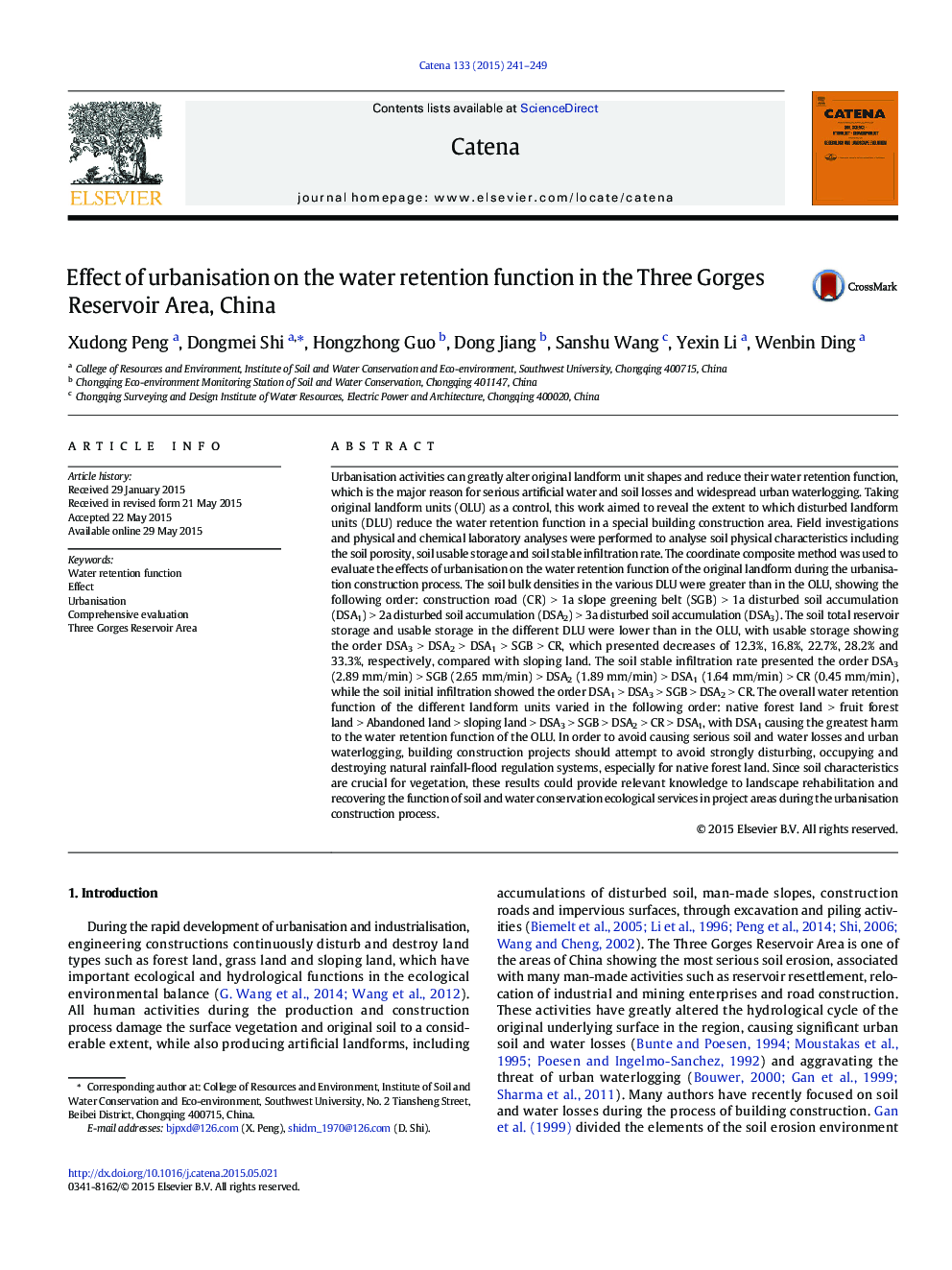| Article ID | Journal | Published Year | Pages | File Type |
|---|---|---|---|---|
| 4571041 | CATENA | 2015 | 9 Pages |
•Urbanisation may reduce soil water retention function and cause urban waterlogging.•Soil bulk density of DLU was greater than OLU, while soil porosity was the opposite.•Soil total reservoir storage and usable storage for various DLU were lower than OLU.•Soil stable, initial infiltration rate for DLU was stronger than OLU.•Water retention function varied as NFL > FFL > WG > SL > DSA3 > SGB > DSA2 > CR > DSA1.
Urbanisation activities can greatly alter original landform unit shapes and reduce their water retention function, which is the major reason for serious artificial water and soil losses and widespread urban waterlogging. Taking original landform units (OLU) as a control, this work aimed to reveal the extent to which disturbed landform units (DLU) reduce the water retention function in a special building construction area. Field investigations and physical and chemical laboratory analyses were performed to analyse soil physical characteristics including the soil porosity, soil usable storage and soil stable infiltration rate. The coordinate composite method was used to evaluate the effects of urbanisation on the water retention function of the original landform during the urbanisation construction process. The soil bulk densities in the various DLU were greater than in the OLU, showing the following order: construction road (CR) > 1a slope greening belt (SGB) > 1a disturbed soil accumulation (DSA1) > 2a disturbed soil accumulation (DSA2) > 3a disturbed soil accumulation (DSA3). The soil total reservoir storage and usable storage in the different DLU were lower than in the OLU, with usable storage showing the order DSA3 > DSA2 > DSA1 > SGB > CR, which presented decreases of 12.3%, 16.8%, 22.7%, 28.2% and 33.3%, respectively, compared with sloping land. The soil stable infiltration rate presented the order DSA3 (2.89 mm/min) > SGB (2.65 mm/min) > DSA2 (1.89 mm/min) > DSA1 (1.64 mm/min) > CR (0.45 mm/min), while the soil initial infiltration showed the order DSA1 > DSA3 > SGB > DSA2 > CR. The overall water retention function of the different landform units varied in the following order: native forest land > fruit forest land > Abandoned land > sloping land > DSA3 > SGB > DSA2 > CR > DSA1, with DSA1 causing the greatest harm to the water retention function of the OLU. In order to avoid causing serious soil and water losses and urban waterlogging, building construction projects should attempt to avoid strongly disturbing, occupying and destroying natural rainfall-flood regulation systems, especially for native forest land. Since soil characteristics are crucial for vegetation, these results could provide relevant knowledge to landscape rehabilitation and recovering the function of soil and water conservation ecological services in project areas during the urbanisation construction process.
